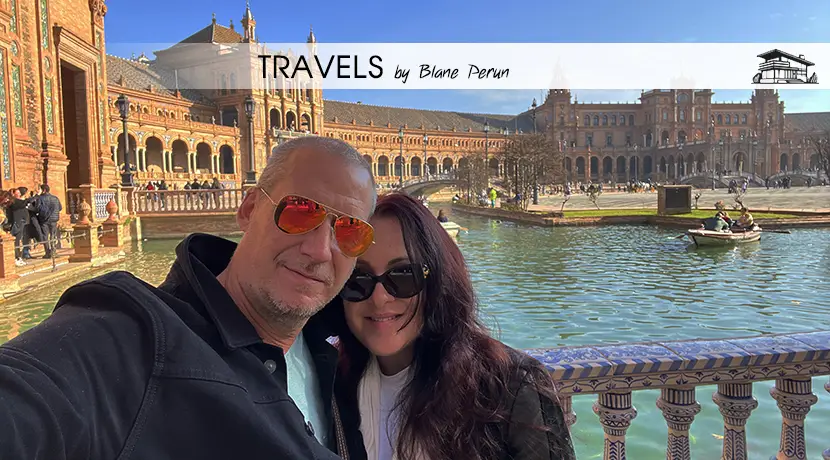Seville Architecture & Interior Design
Unveiling the Splendor of Seville: A Journey Through Its Architectural Marvels
Seville, a city that resonates with the melody of flamenco and the fragrance of orange blossoms, is also a treasure trove of architectural wonders that beckon enthusiasts and casual observers alike. The heart of Andalusia is home to Seville Architecture & Design, an exquisite blend of historical grandeur and contemporary innovation that paints a vivid tableau of the city’s storied past and its vibrant present. This article invites you on an exploratory journey through the architectural veins of Seville, where each structure tells a tale, and every design element signifies a chapter in the city’s rich cultural manuscript.

The Historical Tapestry: Seville’s Architectural Roots
The Alcázar: A Moorish Masterpiece
At the heart of Seville’s historical narrative is the Royal Alcázar, a UNESCO World Heritage site that stands as a testament to the Moorish influence on Andalusian architecture. This palatial complex, with its intricate mudéjar plasterwork and sprawling gardens, exemplifies the synthesis of Christian and Islamic aesthetics. The Alcázar is not just a relic of the past but a living piece of history, its walls echoing the tales of monarchs and sultans who once roamed its corridors.
The Gothic Grandeur of Seville Cathedral
In stark contrast to the Alcázar’s Islamic influences, the Seville Cathedral, or Catedral de Santa María de la Sede, showcases the awe-inspiring might of Gothic architecture. As the largest Gothic cathedral in the world, this monumental structure is a marvel of architectural engineering and artistic craftsmanship. The cathedral’s soaring vaults, intricate stained glass, and the iconic Giralda bell tower exemplify the zenith of medieval architectural ingenuity, drawing visitors into a bygone era of ecclesiastical power and splendor.
The Renaissance Rebirth: Seville’s Modern Metamorphosis
Metropol Parasol: The Contemporary Canopy
In the labyrinthine lanes of Seville’s old quarter lies a juxtaposition of the ancient and the avant-garde, the Metropol Parasol. Known colloquially as “Las Setas” (The Mushrooms), this wooden structure is one of the largest of its kind, offering panoramic views of the city from its undulating walkways. The Metropol Parasol represents Seville’s leap into contemporary design, melding functionality with aesthetic appeal, and serves as a social hub, reflecting the city’s dynamic urban culture.
The Flamenco Dance of Light and Space: The Seville Opera House
Seville’s foray into modern architecture also gave birth to the Seville Opera House, a beacon of cultural modernity that harmonizes the city’s musical heritage with cutting-edge design. This architectural symphony orchestrates light and space to create an immersive experience for opera aficionados, its sleek lines and innovative acoustics setting the stage for performances that resonate with the soul of Seville.
Bridging the Past and Present: Seville’s Urban Tapestry
The Triana Bridge: Linking Seville’s Soul
The Triana Bridge, or Puente de Isabel II, not only serves as a physical connector between Seville’s historic heart and the vibrant Triana district but also as a symbol of the city’s evolving urban landscape. This 19th-century iron bridge, with its elegant arches and panoramic vistas, embodies Seville’s seamless blend of functionality and aesthetic, a hallmark of its architectural ethos.
Plaza de España: The Mosaic of Cultures
Perhaps no other site in Seville encapsulates the confluence of cultures and the fluidity of architectural styles quite like the Plaza de España. This semi-circular complex, with its tiled alcoves representing each Spanish province, bridges regional diversity within a singular architectural narrative. The Plaza is a microcosm of Spain, and by extension, Seville’s architectural and cultural mosaic, inviting onlookers to traverse the breadth of Spanish heritage through its intricate designs and expansive embrace.
In conclusion, Seville Architecture & Design is a kaleidoscope of styles, eras, and influences, each facet reflecting a piece of the city’s soul. From the Gothic spires of its cathedrals to the modernist curves of its cultural centers, Seville stands as a testament to the enduring beauty of architectural evolution. As we walk through its streets, we are walking through the annals of history, each step a bridge to a past interwoven with the promise of the future.

FAQs on Seville Architecture & Design
What makes the Royal Alcázar of Seville architecturally significant?
The Royal Alcázar of Seville is a masterpiece of mudéjar architecture, showcasing the blend of Muslim and Christian design elements. This palatial complex is renowned for its intricate decorative art, beautiful courtyards, and the fusion of various architectural styles that reflect the cultural history of Seville.
How does the Seville Cathedral represent Gothic architecture?
The Seville Cathedral, being the largest Gothic cathedral in the world, embodies the quintessential characteristics of Gothic architecture such as towering vaults, pointed arches, and extensive use of stained glass. Its construction utilized innovative building techniques of the time, making it a monumental example of Gothic architectural prowess.
What is unique about the Metropol Parasol’s design?
The Metropol Parasol is unique for its massive wooden structure, one of the largest in the world, featuring a wavy, mushroom-like design that stands out in the urban landscape of Seville. It combines functionality with aesthetics, offering shade, leisure space, and panoramic views, thus embodying contemporary architectural innovation.
Can you describe the architectural style of the Triana Bridge?
The Triana Bridge, also known as the Puente de Isabel II, is a prime example of 19th-century ironwork architecture. Its design features a series of elegant arches and was one of the first bridges of its kind in Spain, representing the technological and aesthetic advancements of the Industrial Revolution.
What architectural influences are visible in the Plaza de España?
The Plaza de España is a magnificent example of Spanish Renaissance Revival architecture, incorporating elements of Art Deco and Neo-Mudéjar styles. Its design features a unique blend of materials and techniques, including the extensive use of ceramics, and it symbolizes the unity and diversity of Spanish regions through its detailed alcoves and bridges.





